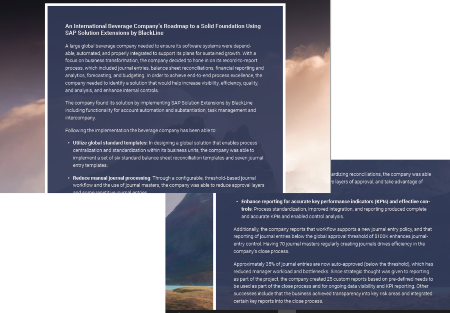Carving out Finance’s Role in Risk Management
Meet the Authors
Key Takeaways
⇨ CFOs must prioritize modern risk management strategies to navigate increasing regulations and complex risk environments, and moving away from manual processes is essential to enhancing data integrity and transparency.
⇨ Understanding a company's specific risk profile and establishing a comprehensive risk management framework, supported by technology and best practices like the COSO framework, is crucial for identifying and mitigating potential risks effectively.
⇨ Leveraging financial automation not only streamlines operations, enhances visibility, and aids in compliance but also allows finance teams to focus on strategic activities, thus proactively managing risks while easing the audit burden.
Modern companies face an increasing number of regulations that are growing more and more complicated. To account for these changes, CFOs are frequently tasked with a growing list of risk management responsibilities.
Finance executives worldwide are placing a heavier focus on risk management, recognizing its importance not only in preventing financially damaging incidents like incorrect filings, but also as a tool to provide valuable insights that drive business strategy.
However, current manual processes often make it difficult to achieve these goals. Reliance on tools like spreadsheets for reconciliation and financial reporting creates fragmented financial close operations and ERP environments that compromise data integrity. These manual workflows do not allow for visibility and transparency into processes. They could even have a damaging effect on financial data, denying companies important insights on potential or existing issues. Furthermore, manual methods can restrict the ability to detect internal or external fraud.
Explore related questions
Improving Risk Management within Finance
To help companies bolster their risk management capabilities, the SAP finance experts at Trintech have highlighted several key best practices organizations should consider:
- Avoid the Status Quo. Maintaining existing manual processes can increase the risk of errors leading to time-consuming audits, errors, and potential misstatements. A commitment to the status quo hinders innovation, prevents access to additional benefits of change, and makes adapting to market variations difficult. While hesitation before making changes is natural, avoiding necessary adjustments can hinder progress.
- Understand Your Risk Profile. The typical risk environment within SAP is increasingly complex due to new regulations and evolving threats. Establishing a healthy risk culture requires introspection to understand specific risk goals, overall company goals, corporate risk tolerance, and the budget for risk management. Companies need to move beyond high-level awareness to consider specific scenarios and where they currently stand.
- Ensure a Solid Foundation The best risk mitigation approaches aim for broad coverage across operational, reporting, and compliance risk categories, rather than just focusing on specific issues, especially since risks are not static and regulations change frequently. While all categories demand attention, not all require equal effort; prioritizing issues based on quantitative and qualitative assessment is key. It is also vital to adopt best practices by seeking authoritative guidance, such as the Committee of Sponsoring Organizations (COSO) framework, which provides a system for internal controls and testing their effectiveness. Learning from peers is also important to validate your risk management solutions.
- Know Where Your Money Is Going Even companies with existing risk management strategies often lack a clear view of how they are spending money to maintain them, including administrative costs, maintenance, and other fixed or variable costs. Creating a roadmap that identifies “risk dollars” allows for optimization of the budget.
- Leverage Technology Given the increased priority of risk management and the complexity of modern risk factors like privacy, data, and AI, leveraging technology is no longer optional but a necessity. Financial automation fundamentally transforms operations. It helps streamline the financial close, increases visibility, and simultaneously reduces risk. Automation performs low-judgment, repeatable tasks and provides real-time reporting and analysis, freeing teams to focus on high-judgment activities. Automating data acquisition can make it easy, accurate, and efficient.
What This Means for SAPinsiders
Set goals and work towards them. Implementing a comprehensive risk management framework, particularly by investing in financial automation, establishes a framework that enables finance teams to work more efficiently and proactively. This transformation provides increased visibility, transparency, standardization, and efficiency for cross-collaboration and real-time insights into potential risks before they impact the business.
Automation is your friend. Implementing financial automation helps achieve standardization of compliance, controls, and overall risk management, demonstrating a commitment to high-quality work. It ensures data and processes continuously mitigate risk using precise and repeatable methods. Also, automation significantly eases the burden of audits. While it doesn’t change requirements, it allows accountants to be alerted to issues proactively and quickly retrieve historical documentation if needed.
Trust the experts. As CFOs are increasingly tasked with risk mitigation, they may need to rely on the expertise of others to ensure compliance with all regulations while also accomplishing their essential finance tasks. Working with partners like Trintech can help leaders to proactively manage risk through automation while keeping an eye out for any gaps in their risk management posture.






